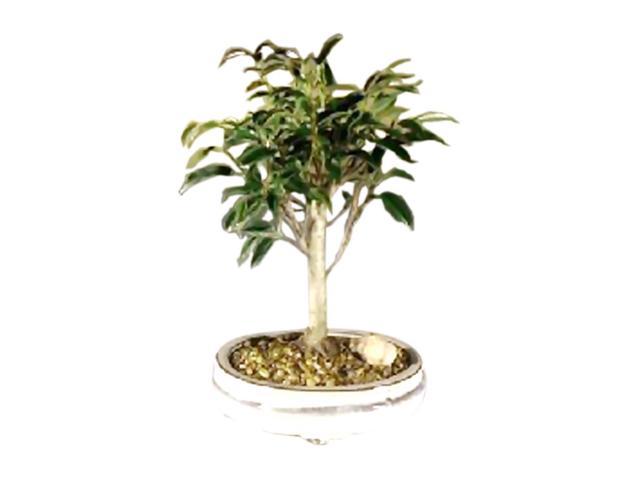Ficus are probably the most common tropical/subtropical bonsai subject, and the most common indoor bonsai. Still, in California it’s not been uncommon to have an experienced bonsai club member look at a Ficus that I’ve brought to a workshop and advise me to get some “real” bonsai material. Ficus don’t always get respect out here despite characteristics that make them nearly ideal bonsai subjects. In the Florida bonsai community I think you’re legally required to grow Ficus! Having spent more than my share of time in tropical rainforests I still have fond memories associated with banyan style trees, aerial roots and buttressed trunks. I use Ficus to scratch that itch. While one can style a Ficus like a pine, why would you? Jerry Meislek (https://www.bonsaihunk.us/) is one of the best-known experts regarding Ficus for bonsai, particularly for indoor growing. His website has tons of great information and photos. He has published perhaps the definitive book on the subject (https://www.bonsaihunk.us/book/BackInPrint/USorderSoft.html). Florida artist Adam Levine demonstrates lots of Ficus techniques on his blog (https://adamaskwhy.com/).
There are hundreds of Ficus species, but there are a handful that are commonly used in bonsai in the US. Ficus microcarpa is what most people think of when referring to Ficus bonsai. These are native to southeast Asia but have been used as street trees and in gardens in Florida and Southern California. There are many varieties of F. microcarpa, but the most common are Green Island (smaller, rounder leaves) and Tiger Bark (white stripes on a grey background bark). Other common species used for bonsai include F. salicaria (willow leaf Ficus), F. benjamina, F. burtt-davyi (S. African), F. ingens (red leaf Ficus, S. African), and F. rubiginosa (Port Jackson fig, Australian). Ficus salicaria have a leaf shape most people don’t associate with Ficus, but they make great bonsai material. F. benjamina are common house plants but tend to be a bit harder to manage for bonsai than microcarpa or salicaria. F. burtt-dayvii has probably the smallest leaves of any Ficus. It’s slow growing though so it’s tough to find one with a large trunk. The red-leafed Ficus ingens is a strong grower with trunks that bulk up quickly. The leaves are red when they emerge, but the don’t reduce that well. It’s probably the easiest of the bunch to propagate from cuttings. The Port Jackson fig has larger leaves that don’t reduce easily. It’s probably best suited for a larger sized bonsai.
While each species has its peculiarities, Ficus in general are tolerant of low light conditions and low humidity found in most homes. They thrive in high light, humid conditions and most will produce aerial roots if the humidity is kept consistently high. Rootbound trees seem to produce more aerial roots than trees comfortable in their pots. Most will readily strike from cuttings done during the growing season. They air layer easily and some (not F. microcarpa) can be propagated from root cuttings. Trees are best repotted in summer during their active growing season. They occasionally suffer from scale, but few other US bugs want to deal with their latex sap. Speaking of latex sap, if you have a latex allergy this is probably not the tree for you.

Ficus can be designed in any style but I think they shine when used to emulate rainforest trees. They work well as banyan style with aerial roots and multiple trunks. They can be used to rapidly create root-over-rock styles, or an epiphyte style on a dead trunk – a tropical tanuki if you will. They are amenable to fusion techniques to create a thicker trunk (or limb) from multiple small ones. They can do well with very little space for their roots. Most species ramify well. Ficus bonsai got a bad reputation when box stores were flooded with cookie cutter, mass produced trees. These were typically an S-curve design, or the “ginsing” ficus with big, bulbous roots. They often came with gravel glued to the surface of the soil for ease in shipping. Ficus bonsai don’t have to look this way! To see some of the best Ficus bonsai look to Taiwan (https://www.pinterest.com/pin/419397784046335173/)

